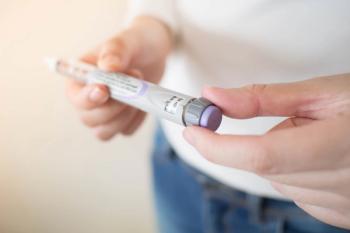
CT Scans Could Help Identify Patients at Risk of Type 2 Diabetes
A study found that CT scans of visceral fat had the highest predictive performance of incident diabetes.
Analysis of computed tomography (CT) scans could help identify patients that are at risk of type 2 diabetes (T2D) and other cardiometabolic conditions, according to new research published in the journal Radiology.1 The authors of the study said that using the technology may offer more tailored risk stratification.
Over 38 million people in the United States have a diagnosed case of diabetes, with more than 90% of them being T2D.2 Risk factors for T2D include having prediabetes, being overweight, and being over the age of 45. According to some estimates, the prevalence of diabetes is expected to increase significantly, potentially impacting over 50 million Americans by 2030.3 This highlights the urgent need to improve both detection and prevention measures.
READ MORE:
“[T]he predictive ability of individual imaging parameters for cardiometabolic diseases, traditionally diagnosed using conventional modalities, remains underexplored,” the authors wrote. “T2D is a common metabolic disorder associated with considerable comorbidities and complications and is frequently diagnosed late. Body composition, including muscle mass and differential fat distribution, has the potential to predict T2D and related complications.”
Investigators conducted a retrospective study to evaluate the ability of automated CT-derived markers to predict diabetes and associated cardiometabolic comorbidities. Data was gathered from comprehensive health screenings between 2012 and 2015, which are required by South Korea’s Industrial Safety and Health Law.
The study cohort included 32166 patients aged 25 years or older who underwent fluorine 18 fluorodeoxyglucose positron emission tomography (PET) or CT scans. The scans were processed using FDA–approved commercial software to measure the sectional areas of skeletal muscle, subcutaneous fat, and visceral fat. Patients also filled out questionnaires on demographic information, including health behaviors, medical history, and medication use. Of those patients, 27298 patients who did not initially have diabetes and were followed until December 2022.
Investigators found the baseline prevalence and incidence of diabetes was 6%, which increased to 9% during the 7-year follow-up period. Of the sectional areas that were measured, visceral fat had the highest predictive performance of incident diabetes, with an area under the receiver operating characteristic curve (AUC) of .70 for men and .82 for women. When visceral fat, muscle area, liver fat fraction, and aortic calcification were combined, it improved predictive performance.
Additionally, the CT-derived markers were also able to identify diagnosed fatty liver, coronary artery calcium scores greater than 100, sarcopenia, and osteoporosis. AUC scores for these ranged from .80 to .95.
“The results are encouraging as they demonstrate the potential of expanding the role of CT imaging from conventional disease diagnosis to opportunistic proactive screening,” Seungho Ryu, MD, PhD, senior author on the study, said in a release.4 “This automated CT analysis improves risk prediction and early intervention strategies for diabetes and related health issues.”
Study limitations include that T2D was diagnosed with a single measurement, that pancreatic fat was not analyzed, that the generalizability of the findings might be limited, and that selection bias may have occurred due to other scans that were performed based on patient preference.
“By integrating these advanced imaging techniques into opportunistic health screenings, clinicians can identify individuals at high risk for diabetes and its complications more accurately and earlier than the current approach,” Ryu said in a release.4 “This could lead to more personalized and timely interventions, ultimately improving patient outcomes.”
READ MORE:
Pharmacy practice is always changing. Stay ahead of the curve: Sign up for our
References
1. Chang Y, Yoon S, Kwon R, et al. Automated Comprehensive CT Assessment of the Risk of Diabetes and Associated Cardiometabolic Conditions. Radiology. 2024. doi: 10.1148/radiol.233410
2. About Type 2 Diabetes. Report. CDC. May 15, 2024. Accessed August 6, 2024. https://www.cdc.gov/diabetes/about/about-type-2-diabetes.html
3. Rowley WR, Bezold C, Arikan Y, Byrne E, Krohe S. Diabetes 2030: Insights from Yesterday, Today, and Future Trends. Popul Health Manag. 2017 Feb;20(1):6-12. doi: 10.1089/pop.2015.0181. Epub 2016 Apr 28. PMID: 27124621; PMCID: PMC5278808.
4. CT health screening can identify diabetes risk. News Release. Radiological Society of North America. August 6, 2024. Accessed August 6, 2024. https://www.rsna.org/news/2024/august/ct-screening-can-identify-diabetes-risk
Newsletter
Pharmacy practice is always changing. Stay ahead of the curve with the Drug Topics newsletter and get the latest drug information, industry trends, and patient care tips.
























































































































